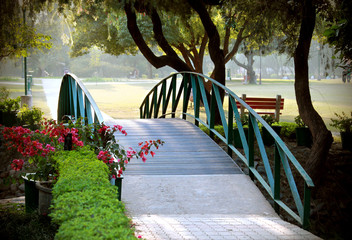Connecting People with Nature and Communities: How to Build Your Own Bridge
Did you know that the do it yourself (DIY) world is expected to grow to be worth over $13.9 billion by 2021? With benefits such as cost savings and the family-friendly aspect, it is no surprise that this industry is booming.
If you want to get in on the DIY trend while connecting to nature there is no better way to do so than with building a bridge.
We are going to walk you through how to build a bridge for your very own backyard or community!
How to Build a Bridge
The first step in building your very own DIY bridge is to decide the type of bridge you’d like to build and where it will live once built.
There are many different types of bridges to consider before you begin construction:
- Pedestrian bridge
- Trail bridge
- Utility Bridge
A pedestrian bridge, which links a path over a roadway, railway, or waterway, is probably the most natural fit for a community setting. Get more info on the benefits of a pedestrian bridge versus other varieties. Remember, building a bridge in certain areas like a busy road, should be left to the professionals.
Once you’ve selected your type of bridge and where it will be built, you’re ready to get supplies.
DIY Bridge Supplies
To build a small pedestrian bridge there are a few types of materials and tools you will need. Select which materials you’d like the bridge to be built from. This could be wood, concrete, or steel amongst others.
Common tools that are needed to build an untrussed pedestrian bridge are:
- Logs/wood (or other materials)
- Chainsaw
- Chalk
- Ax
- Cement
- Level
- Shovel
- Hammer
- Drill bit and screws
- Paint or wood stain
Once you’ve collected all of your materials and tools, you are ready to begin construction.
DIY Bridge Construction
When you are ready to start construction, take all of your materials and tools to your selected location.
The first step in the construction phase is to build a solid base on either side of the location. For example, if you are building over a waterway you must create a foundation on both sides of the bank where the bridge will start and end.
The second step will be to place logs across the gap or valley. These logs, or other materials, are stringer logs to hold the floorboards.
The third step in making a bridge is to place the floorboards across the stringer logs. Depending on how you purchased your materials, you may need to cut these boards to the proper length.
The fourth step is to add optional railings. These railings can be made of additional wood or rope.
Lastly, it’s time to paint or stain your DIY bridge. This is the step to let your creativity shine. Be sure to select a stain or paint that is weather resistant in order to preserve the beauty of the bridge.
Now you are ready to build your very own DIY bridge! If you liked learning how to build a bridge, check out some of our other DIY project tips for your home.

